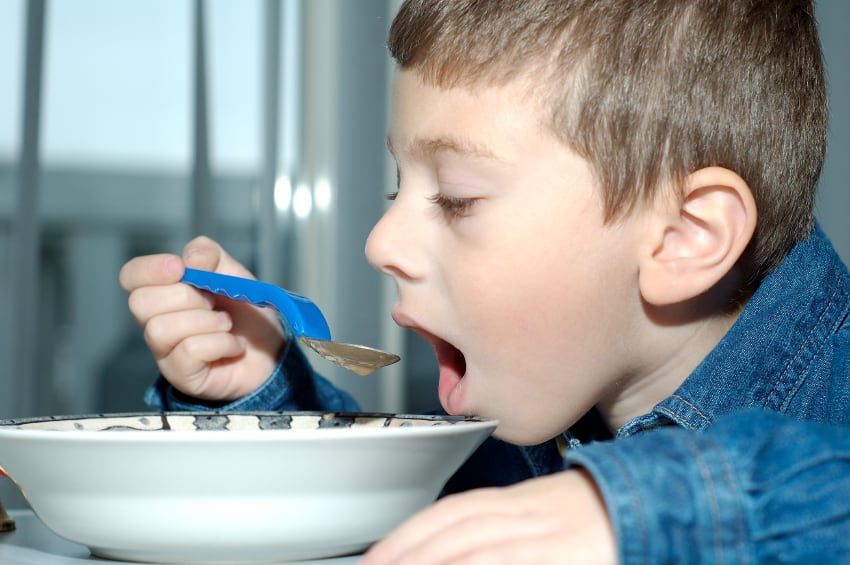About 96% of ads for children aged from two to eleven years of age seen on children's programming were for products high in the so-called nutrients to limit (NTL), including saturated fat, trans fat, sugar, and sodium. Recommendations for NTLs were established by the federal Interagency Working Group (IWG), which was comprised of representatives from the Federal Trade Commission (FTC), the CDC, the FDA, and the USDA.
Even more damning was the finding that 98% of ads from companies that are members of the industry-backed Children’s Food and Beverage Advertising Initiative (CFBAI) were for products high in NTL. CFBAI-member companies include Burger King Corporation, Cadbury, Campbell Soup Company, The Coca-Cola Company, ConAgra Foods, Dannon, General Mills, The Hershey Company, Kellogg’s, Kraft Foods Company, Mars, Inc., McDonald’s USA, LLC, Nestlé USA, PepsiCo, Post Foods, and Unilever.
While many foods made by CFBAI companies meet federal nutrition guidelines, the study suggests that the companies choose to market less-nutritional products to children more heavily.
“The self-regulatory effort has been ineffective so far,” said Lisa Powell, professor of health policy and administration in the UIC School of Public Health and lead author of the study.
Study details

Dr Powell and her team used Nielsen TV ratings data from 2009 to elucidate a child's exposure to food and beverage ads seen on all programming (both adult and children's), and whether they fit the proposed voluntary nutrition guidelines recommended by the IWG. It was also the first study to look at the nutritional content of ads on children's shows with a child-audience share of 35% or greater.
Results showed that less than 50% of a child’s exposure to food and beverage TV advertising was for ads seen on children's programming, which meant that, “a significant portion of exposure is not subject to self-regulation”, they said.
In addition, over 84% of all food and beverage ads seen by children were for products high in fats, sugars and sodium. On children's programming, the figure rose to over 95%, and over 98% for the CFBAI ads.
The new study serves as a benchmark to determine if the new, common CFBAI nutrition criteria will improve the content of products marketed to children, said Powell.
‘Thwarted by commercial interests’
The study, published in Childhood Obesity, echoes statements from William Dietz, MD, PhD, the former director of the Division of Nutrition and Physical Activity at the government-funded Centers for Disease Control and Prevention (CDC) made earlier this year in Health Affairs.
According to Dr Dietz, although federal efforts have led to “modest improvements” in food quality and marketing practices in recent years, “commercial interests have consistently overridden the health concerns of children”.
According to the FTC, food and beverage companies have reduced their spend to market their products to children and teens from $2.1 billion in 2006 to $1.8 billion in 2009. However, TV advertising expenditures continued to represent about 35% of all expenditures.
Dr Dietz acknowledged that the industry-backed Children’s Food and Beverage Advertising Initiative (CFBAI) has set guidelines for calories, fat, sodium, and sugar in products marketed to kids. Meanwhile, NHANES data shows that children are now drinking less sugary soda and fast food than they used to, he added.
“[But] a close reading of the industry criteria suggests that the CFBAI based its maximal nutrient levels more on the current products marketed by its members than on a judgment about what was best for children,” he claimed.
New criteria…
Dr Powell and her co-workers note that all the CFBAI member companies will adhere to new uniform nutrition criteria after December 31, 2013, which cover 10 major food categories. All the categories have calorie limits, they note.
“These new CFBAI nutrition criteria are an improvement over current company-specific standards. However, the IWG recommendations are stronger in several ways. For example, the new CFBAI sodium restrictions vary from [less than or equal to] 110 to [less than or equal to] 740 mg per serving size across product categories, whereas the IWG sodium limit is [less than or equal to] 210 mg per serving size for individual items and [less than or equal to] 450 mg per serving size for main dishes and meals.”

“This study found that the vast majority of food and beverage products in TV advertisements seen by children did not meet the IWG nutrition principles for NTL, that less than one half of all food ads seen by children come from children’s programming covered by the CFBAI, that foods advertised on children’s programming are of lower nutritional quality than those ads seen by children on general-audience programming, and that the products advertised to children by CFBAI-member companies are of lower nutritional quality than non-CFBAI company product ads.
“This suggests that, to date, self-regulation has not been successful at protecting children from exposure to advertising for unhealthy foods.”
Dr Powell and her co-authors concluded that continued monitoring is necessary to evaluate if the nutritional landscape of overall and child-directed advertising exposure is improved by the new CFBAI-developed uniform nutrition criteria, and other industry self-regulatory efforts.
Source: Childhood Obesity
December 2013, Volume 9, Number 6, Pages 524-531, doi: 10.1089/chi.2013.0072
“Nutritional Content of Food and Beverage Products in Television Advertisements Seen on Children’s Programming”
Authors: L.M. Powell, R.M. Schermbeck, F.J. Chaloupka
